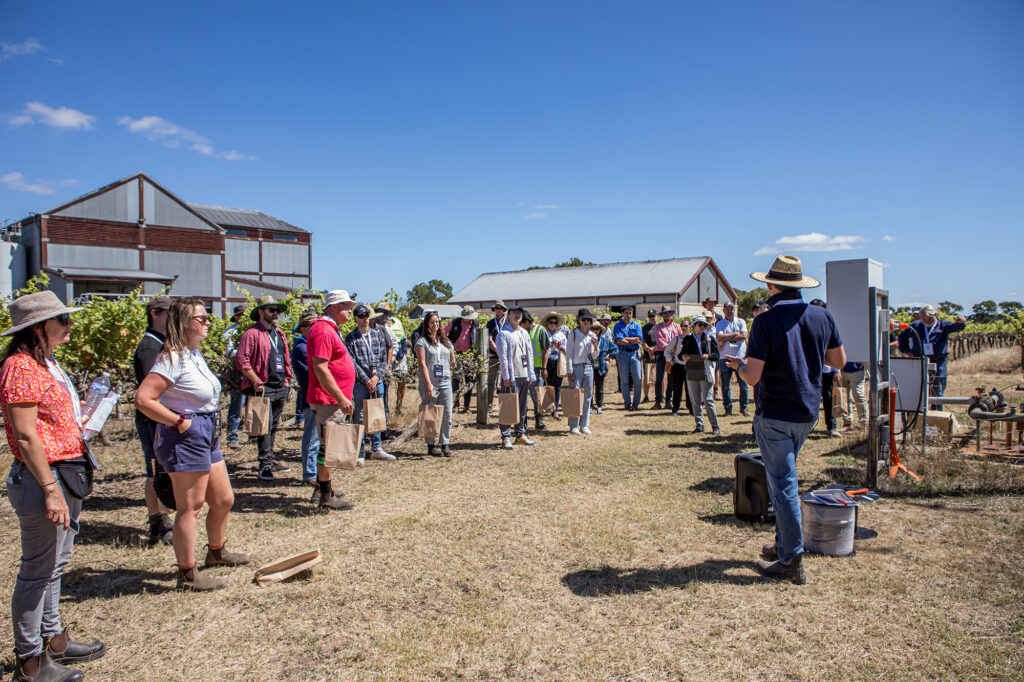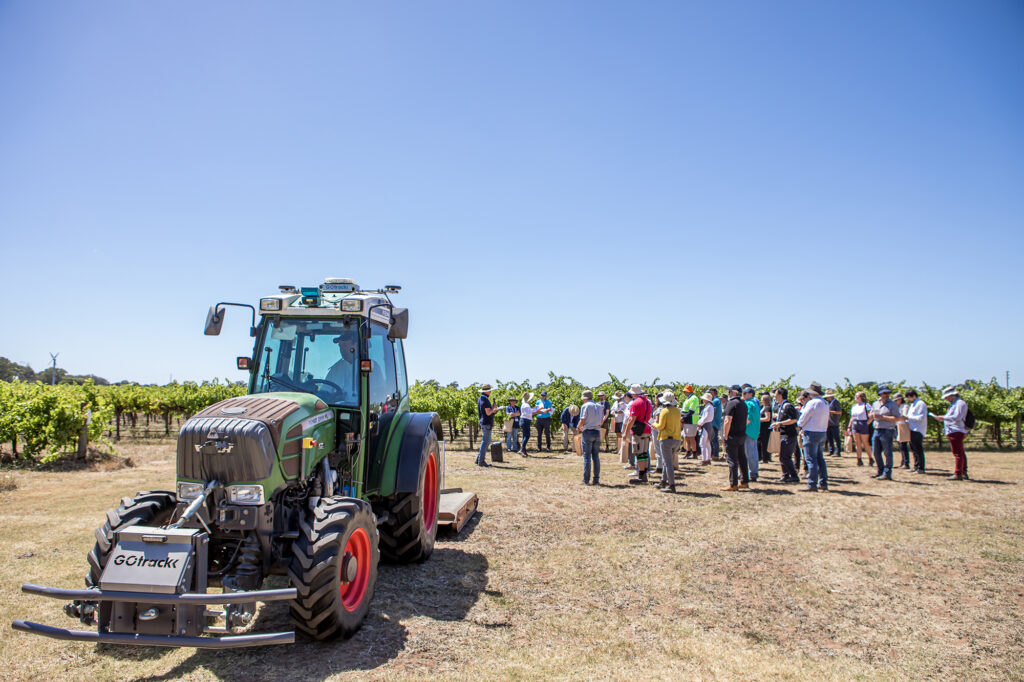In Coonawarra, biosecurity isn’t just ‘good practice’, it’s vital given the region’s proximity to Phylloxera Infested Zones in Victoria.
Vineyard owners in Coonawarra use a range of biosecurity tools including signage, fencing, footbaths and shoe covers to help keep vineyards safe. And when running regional events, biosecurity protocols are front of mind.
Dr Catherine Kidman is Technical Viticulturist at Wynns Coonawarra Estate and Chair of the Australian Cabernet Symposium, which was recently held in Coonawarra and Margaret River.
Cath said the symposium attracted 60 attendees from around Australia, who converged on a working demonstration vineyard in Coonawarra.

“At the field demonstration, biosecurity was paramount to the event occurring and this was communicated to participants and exhibitors well before they arrived on site,” Cath said.
“The ticketing process to book the event highlighted the biosecurity risks and requirements and further emails were sent out the day before the event.
“To ensure a successful process, we made the visitors enter the demonstration via a bus and only allowed limited vehicle traffic for those visitors who were unable to take the bus. These vehicles were parked on a roadway, away from the vineyard.
“Upon entering the vineyard, the bus pulled up to lines of footbaths whereby local attendants ensured all visitors walked off the bus and straight through the chlorine footbaths, and that 60 seconds was spent in the footbaths to ensure effective disinfestation had occurred.”
Biosecurity is also an important consideration for the Coonawarra Rail Trail which runs from Penola through the Coonawarra region. At the heart of the rail trail is the Coonawarra Wineries Walking Trail, which includes six wineries and is just under five kilometres in length.
To assist in protecting the vineyards along the trail, several biosecurity protocols have been implemented including ‘Keep Coonawarra Phylloxera Free’ messaging on all promotional material including websites, apps and brochures, and physical signage along the trail with messages such as ‘Keep to the designated walking trail’.
Coonawarra Vignerons Executive Officer Hugh Koch said biosecurity practices were particularly high in Coonawarra during peak times such as vintage.

“We’re fortunate in Coonawarra to have the Naracoorte Heat Shed close by for disinfesting equipment and machinery before it enters our region,” Hugh said.
“The heat shed is one of our most important biosecurity tools in Coonawarra. Many of the larger vineyard owners in Coonawarra make it mandatory for contractors to use the heat shed before entering their properties.”
The Naracoorte Heat Shed, managed by Vinehealth Australia, is the only purpose-built facility in South Australia for treating vineyard machinery to ensure that it’s free from pests and diseases including phylloxera.
Cath said Wynns and Treasury Wine Estates (TWE) use the heat shed to disinfest all machinery and specific equipment prior to coming on to their vineyards from other South Australian regions.
“We also do staff training with inductions to highlight biosecurity risks, and we have a biosecurity e-learning module that staff complete periodically to serve as a refresher,” Cath said.
“We have an electronic sign-in and registry of visitors and contractors which includes questions around biosecurity so we can proactively address any potential biosecurity issues.
“When we have guests as part of our itinerary planning, we always ensure there is appropriate understanding about the risks of phylloxera and try and plan the travel itinerary to minimise risks. We have footbaths for all visiting staff and visitors who will be entering the vineyard who are assessed as risky. And where possible, we avoid having people and vehicles entering our vineyards and have designated parking and roadways to avoid this.”
Sometime ago, Coonawarra Vignerons undertook a regional phylloxera outbreak simulation with the then Phylloxera and Grape Industry Board of South Australia. TWE also completed a similar business-focused simulation with Vinehealth Australia six years ago.
“This type of scenario planning is very useful for raising awareness of the implications of an outbreak, and also highlighting where you are doing things well and where improvements can be made,” Cath said.
“The regional simulation was also important to understand what would need to be done if an outbreak occurred in Coonawarra.”